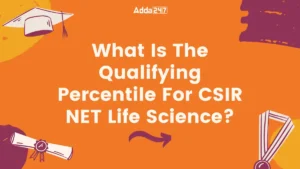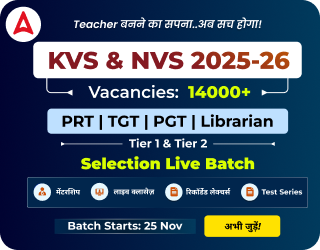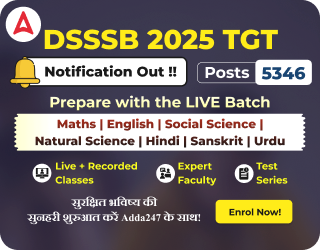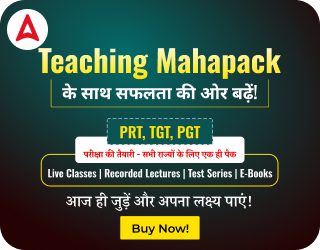Table of Contents
The Teachers Recruitment Board (TRB), Tamil Nadu, will conduct the TNTET 2025 Exam on 15 November 2025 (Paper 1) and 16 November 2025 (Paper 2). With the exam approaching, candidates are in the final phase of their preparation, focusing especially on Child Development and Pedagogy (CDP) – a section that can make a significant difference in overall performance.
CDP carries 30 marks in both Paper 1 and Paper 2, testing your understanding of child psychology, teaching-learning processes, and educational theories. To help candidates prepare effectively, we’ve compiled a list of the most important TNTET CDP Questions and Answers with detailed solutions.
TNTET CDP Questions
The TNTET CDP syllabus focuses on topics like physical, cognitive, and moral development, learning theories, constructivist approaches, and teaching methodologies. Here’s a quick overview of the CDP section based on the TNTET Paper 1 and Paper 2 syllabus.
- Paper: Appears in both Paper 1 (Primary) and Paper 2 (Upper Primary)
- Total Questions: 30 questions per paper
- Total Marks: 30 marks
- Duration: 2.5 hours
- Marking Scheme: 1 mark per correct answer
- Negative Marking: None
- Question Type: Objective (Multiple Choice)
- Difficulty Level: Paper 1: Up to Class 8 and Paper 2: Up to Class 10
Why CDP Is Important for TNTET?
The Child Development and Pedagogy section helps assess how well a teacher understands a child’s learning process, growth, and social behavior. Scoring well in CDP not only boosts your total marks but also reflects your teaching aptitude. To ace this section:
- Revise developmental theories by Piaget, Vygotsky, Kohlberg, and Gardner.
- Understand the constructivist learning approach.
- Practice scenario-based pedagogy questions daily.
- Focus on the educational psychology of children aged 6–11 years (Paper 1) and 11–14 years (Paper 2).
TNTET CDP Questions and Answers
Q1. The stage that marks the transition from childhood to adulthood is known as –
(a) Early childhood
(b) Middle childhood
(c) Late childhood
(d) Adolescence
Q2. Which activity primarily involves gross motor development?
(a) Colouring a picture with crayons
(b) Writing letters on a notebook
(c) Climbing stairs or jumping
(d) Threading a needle
Q3. The first and most influential agent of socialization for a child is –
(a) School
(b) Family
(c) Peer group
(d) Media
Q4. When a child believes that non-living things have feelings and consciousness, it is called –
(a) Animistic thinking
(b) Egocentrism(c) Conservation
(d) Transductive reasoning
Q5. Assertion (A): A five-year-old child cannot understand that the quantity of liquid remains the same when poured into differently shaped glasses.
Reason (R): The child is still in Piaget’s preoperational stage of cognitive development.
(a) Both (A) and (R) are true and (R) explains (A).
(b) Both (A) and (R) are true, but (R) does not explain (A).
(c) (A) is true but (R) is false.
(d) Both (A) and (R) are false
Q6. A teacher supports students by giving hints, guiding questions, and partial solutions when needed. This is an example of –
(a) Scaffolding
(b) Reinforcement
(c) Classical conditioning
(d) Observational learning
Q7. According to Vygotsky, effective learning takes place through –
(a) Discovery learning
(b) Rote memorization
(c) Social interaction and collaboration
(d) Conditioning and reinforcement
Q8. According to Kohlberg, at the Conventional level of moral development, an individual –
(a) Obeys to avoid punishment
(b) Acts to gain rewards
(c) Conforms to social rules to gain approval
(d) Questions moral principles independently
Q9. Which of the following best defines a progressive classroom?
(a) Focused on exams and results
(b) Dependent solely on textbooks
(c) Teacher-centred and rigid
(d) Learner-centred and activity-based
Q10. According to Gardner’s theory of Multiple Intelligences, an effective school counsellor should possess strong –
(a) Logical intelligence
(b) Linguistic intelligence
(c) Interpersonal intelligence
(d) Spatial intelligence
Solutions:
Ans 1 : (d) Adolescence
Explanation: Adolescence is the period between childhood and adulthood, marked by rapid physical, emotional, and cognitive changes.
Ans 2: (c) Climbing stairs or jumping
Explanation: Gross motor skills involve large muscle groups used in activities like walking, running, or jumping.
Ans 3: (b) Family
Explanation: The family shapes a child’s basic social behaviour, values, and communication from birth.
Ans 4: (a) Animistic thinking
Explanation: According to Piaget, animistic thinking is common during the preoperational stage (2–7 years).
Ans5: (a) Both (A) and (R) are true and (R) is the correct explanation of (A).
Explanation: Preoperational children fail conservation tasks due to centration — focusing on one aspect (height or width) at a time.
Ans 6: (a) Scaffolding
Explanation: Vygotsky’s concept of scaffolding helps learners achieve tasks within their Zone of Proximal Development (ZPD).
Ans 7: (c) Social interaction and collaboration
Explanation: Vygotsky emphasized that learning is a social process where interaction enhances understanding.
Ans 8: (c) Conforms to social rules to gain approval
Explanation: The conventional stage focuses on maintaining relationships and social order.
Ans 9: (d) Learner-centred and activity-based
Explanation: Progressive education encourages active learning, creativity, and experiential understanding.
Ans 10: (c) Interpersonal intelligence
Explanation: Interpersonal intelligence helps counsellors understand and empathize with others’ emotions and needs.




 CSIR NET Life Science Salary, What to Ex...
CSIR NET Life Science Salary, What to Ex...
 What Is A Good Score In CSIR NET Life Sc...
What Is A Good Score In CSIR NET Life Sc...
 What Is The Qualifying Percentile For CS...
What Is The Qualifying Percentile For CS...












